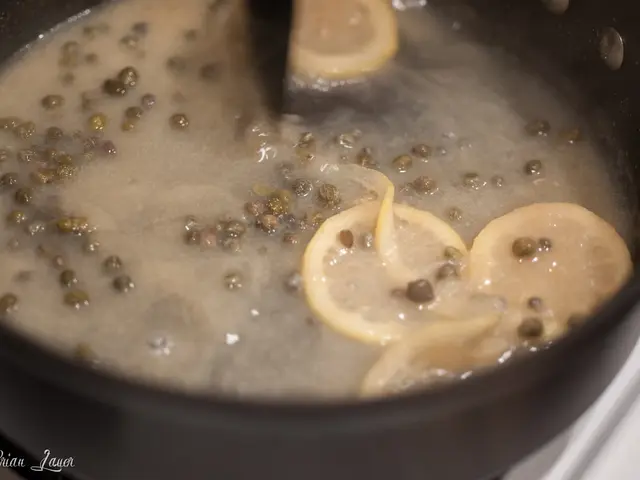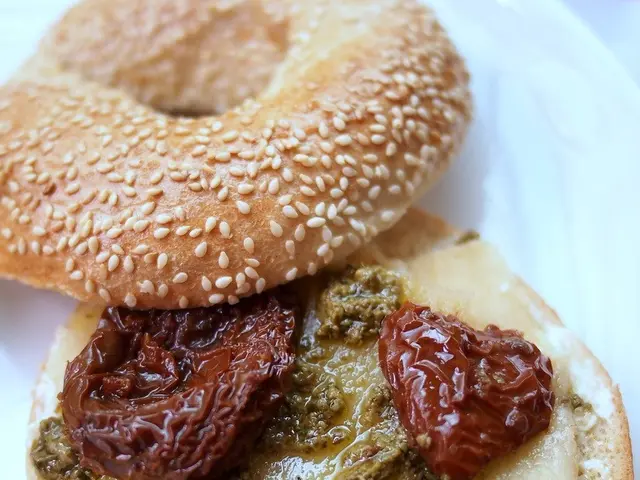Exploring the Distinctiveness: Gumbo versus Jambalaya
Get a taste of New Orleans like a local and dive into the hearty flavors of gumbo and jambalaya! These two Southern favorites are often found on menus across the Big Easy, but what makes these iconic dishes stand out? Let's break it down.
Gumbo stole the show
Gumbo is a Creole dish with a rich heritage that blends flavors from various culinary cultures. This hearty stew can contain an assortment of meats and seafood, like chicken, andouille sausage, shrimp, crab, and oysters. The dish starts with the "holy trinity" of vegetables (celery, bell pepper, and onion), then gets thickened with okra or file powder (made from ground sassafras leaves). Some cooks opt for a dark roux made from melted butter and flour for a richer taste. With a variety of styles, like Cajun, Creole, and gumbo z'herbes, the recipe's foundation is flexible and open to personal preferences. Gumbo simmers for hours, creating a bold flavor profile that's always served over a bed of rice.
Jambalaya - the crowd-pleaser
Jambalaya and gumbo share many similarities in terms of seasonings, broths, meats, and vegetables, but there are notable differences. Jambalaya doesn't use okra or file powder as a thickener, and it doesn't contain a roux. What sets jambalaya apart is the use of rice, which is cooked alongside the other ingredients, unlike gumbo where rice is served separately. Early Spanish settlers may have influenced jambalaya through the rice dish paella, while West African slaves introduced jollof rice, another precursor to jambalaya.
History united
Gumbo's origins might be linked to the French bouillabaisse or the traditional stew of the Choctaw tribe, and its name comes from a West African word for okra. The West African slave community may have contributed to the evolution of jambalaya through the dish jollof rice. Today, both dishes can incorporate various meats and seafood, spices, and ingredients, cherished by cooks across the South. So, whether you're in Baton Rouge or New Orleans, you'll find plenty of twists on these classic Southern stews - laissez les bon temps rouler!
Treat your taste buds
Try your hand at these mouthwatering gumbo and jambalaya recipes.
- Chicken and Andouille Gumbo - A healthier gumbo option with homemade Cajun seasoning and adjustable ingredients.
- Slow Cooker Shrimp Gumbo - Skip the traditional gumbo roux to save time while still savoring the flavors of homemade andouille sausage, shrimp, and chicken.
- Easy Chicken Gumbo - A quick gumbo recipe using a store-bought rotisserie chicken, ideal for busy weeknights.
- Chicken and Andouille Sausage Jambalaya - A filling dish perfect for a crowd, flavored with an assortment of spices and proteins.
- Shrimp and Okra Gumbo with Tasso - A Latin-inspired gumbo with tasso, a type of cured pork, for an exciting taste adventure. Explore the rich histories and unique flavors of gumbo and jambalaya and enjoy the best of Southern cuisine!
- The rich and hearty stew, Gumbo, stands out with its diverse flavors from various culinary backgrounds, ready to be savored over a bed of rice.
- Jambalaya, on the other hand, captivates with its unique blend of ingredients like rice, cooked alongside the other elements, setting it apart from gumbo.
- History and culinary traditions unite in the Southern staples of Gumbo and Jambalaya, with roots tracing back to West African jollof rice and French bouillabaisse.
- Treat your taste buds and delve into the intricate distinctions between these iconic dishes, from Chicken and Andouille Gumbo to Shrimp and Okra Gumbo with Tasso, or traditional Chicken and Andouille Sausage Jambalaya.







